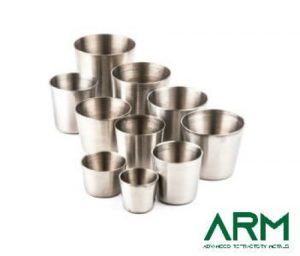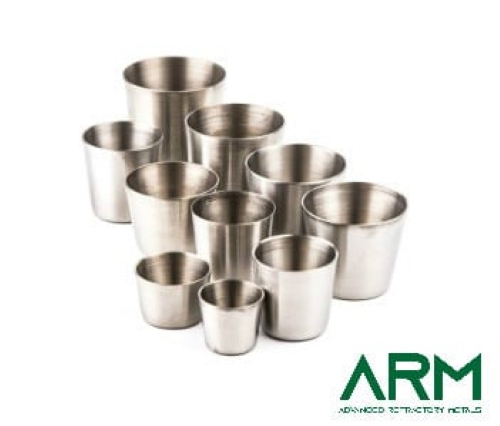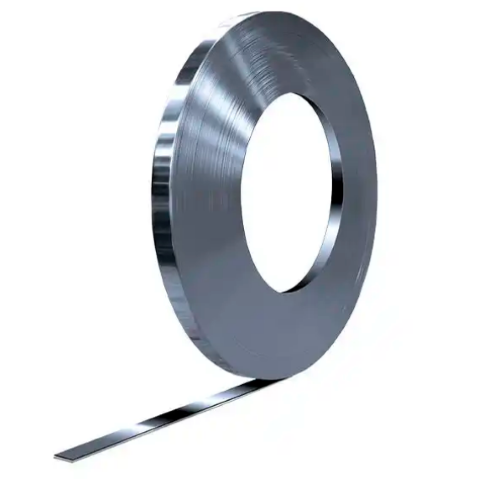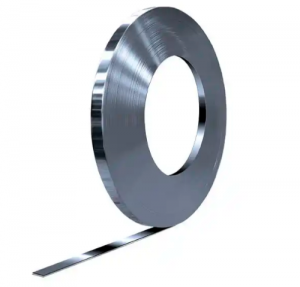Introduction
Zirconium and titanium are both transition metals renowned for their excellent resistance to corrosion and high strength-to-weight ratios, making them invaluable in various industrial applications. Despite their similarities, their distinct properties often dictate their suitability for specific applications.

This comparative analysis will explore the physical, chemical, and mechanical properties of zirconium and titanium strips, highlighting their advantages in different industrial contexts.
Physical Properties
Zirconium has a density of approximately 6.52 g/cm³, which is lower than most steels but higher than titanium. Its melting point is 1855°C (3371°F), providing excellent resistance to high temperatures. It appears as a silvery-white, lustrous metal that forms a thin oxide layer when exposed to air, enhancing its corrosion resistance.
Titanium’s density is about 4.5 g/cm³, making it one of the lightest structural metals. It has a melting point of 1668°C (3034°F), which is lower than zirconium’s but still high enough for most applications. Titanium has a silvery-grey, metallic appearance and forms a protective oxide coating that is highly impermeable and resistant to corrosion.
Chemical Properties
Zirconium is exceptionally resistant to corrosion by acids, alkalis, salt solutions, and other agents, making it suitable for chemical processing environments. It is generally non-reactive but can form volatile compounds with some elements at high temperatures.
Titanium offers excellent corrosion resistance, surpassing that of stainless steels in many environments, especially chlorides. Similar to zirconium, it is quite inert but can react with oxygen at high temperatures and pressures.
Mechanical Properties
Zirconium has high tensile strength, which can be enhanced through alloying and heat treatment. It also exhibits good ductility, allowing it to be rolled into thin strips without fracturing. Its relatively low thermal expansion is beneficial in applications involving temperature fluctuations.
Titanium boasts an exceptional strength-to-weight ratio, stronger than many steels while being much lighter. It is highly ductile, with the ability to withstand significant deformation before failing. Like zirconium, titanium exhibits low thermal expansion, helping maintain dimensional stability under varying temperatures.
Industrial Applications
Zirconium strips are used in the nuclear industry, particularly for cladding fuel rods due to their low neutron absorption. They are also employed in aggressive corrosion environments in chemical processing and in high-temperature applications in the aerospace industry.
Titanium strips are predominantly used in aerospace for constructing aircraft and spacecraft, thanks to their strength-to-weight ratio and corrosion resistance. They are ideal for marine applications, such as shipbuilding and submersibles, due to their immunity to saltwater corrosion. Additionally, titanium is extensively used for surgical implants and medical instruments because of its biocompatibility and resistance to body fluids.
Conclusion
While both zirconium strips and titanium strips offer exceptional properties, the choice between them often depends on specific application requirements such as weight considerations, cost, and environmental exposure. Titanium strips, with its lower density and superior strength-to-weight ratio, is preferred in aerospace and medical implants. Conversely, the superior thermal stability and corrosion resistance of zirconium strips make them ideal for chemical processing and nuclear applications (See Table 1). For more products, please check Advanced Refractory Metals (ARM).
Table 1. Zirconium Strips vs Titanium Strips
| Property | Zirconium Strips | Titanium Strips |
| Density | 6.52 g/cm³ | 4.5 g/cm³ |
| Melting Point | 1855°C (3371°F) | 1668°C (3034°F) |
| Appearance | Silvery-white, lustrous | Silvery-grey, metallic |
| Corrosion Resistance | Excellent against acids, alkalis, and salt solutions | Superior in chlorides and saltwater |
| Reactivity | Non-reactive but forms compounds at high temperatures | Inert but reacts with oxygen at high temps and pressures |
| Mechanical Strength | High, can be enhanced by alloying | Very high, best strength-to-weight ratio |
| Ductility | Good, easily formed into strips | Excellent, highly deformable without fracturing |
| Thermal Expansion | Low, maintains shape under temperature fluctuations | Low, ensures dimensional stability |
| Primary Applications | Nuclear reactors, chemical processing, aerospace | Aerospace, marine, medical implants |


